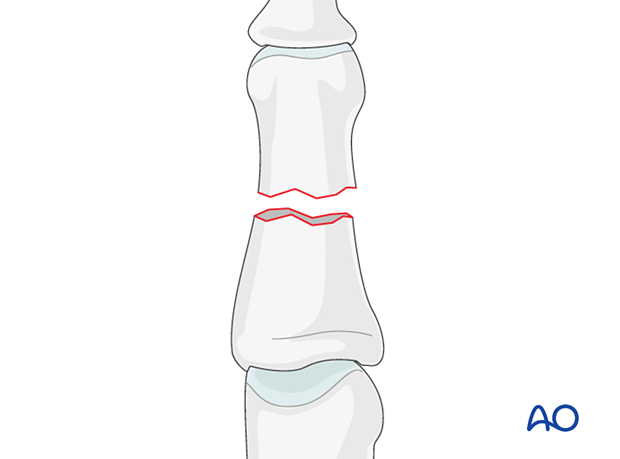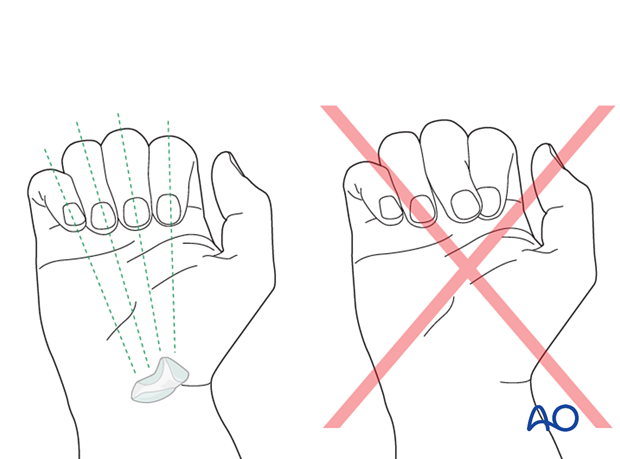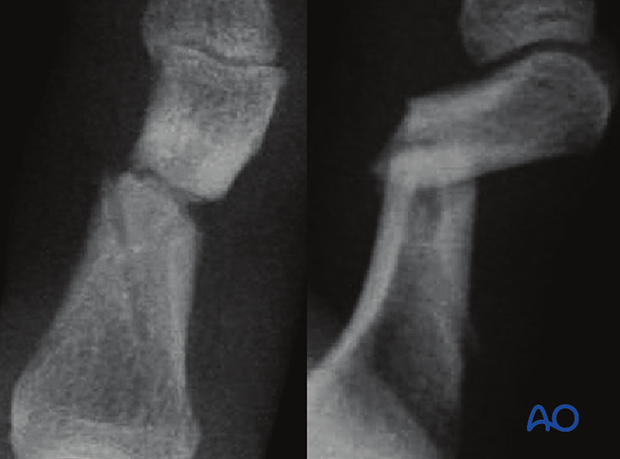Transverse extraarticular or diaphyseal fracture
Definition
Simple transverse metaphyseal and shaft fractures of the middle phalanges are classified according to AO/OTA as 78.2–5.2.1A, 2A, and 3A, respectively, where 2–5 indicates which finger is injured.

Further characteristics
Rotational deformity
In fractures distal to the proximal interphalangeal (PIP) joint, overlap of neighboring fingers may occur when there is substantial rotational displacement.

Outcomes
Outcome of fractures of the middle phalanx is usually more favorable than those of the proximal phalanx. This is largely because limitations in distal interphalangeal (DIP) joint motion are not such a disability as similar stiffness of the PIP and metacarpophalangeal (MCP) joints.
Imaging
AP and lateral x-rays should be taken.
In this case, the distal fragment has tilted dorsally. There is an additional oblique fracture in the diaphysis of the phalanx.














